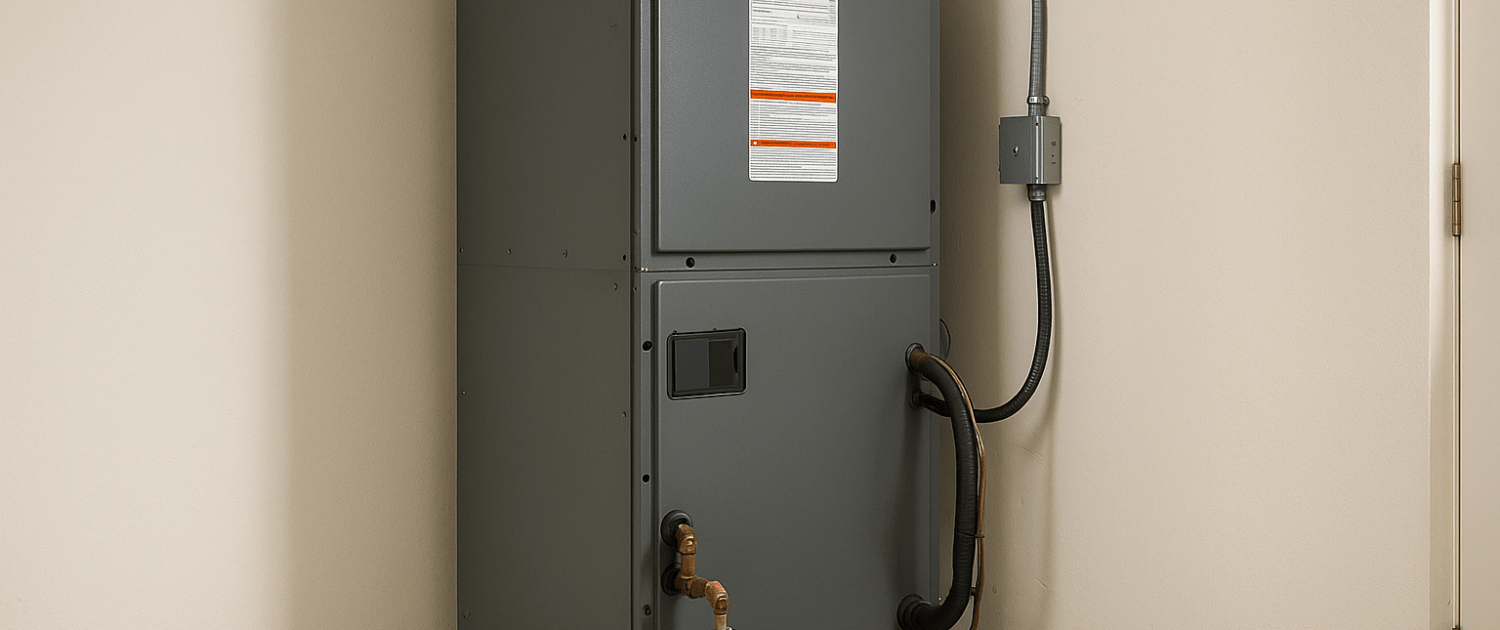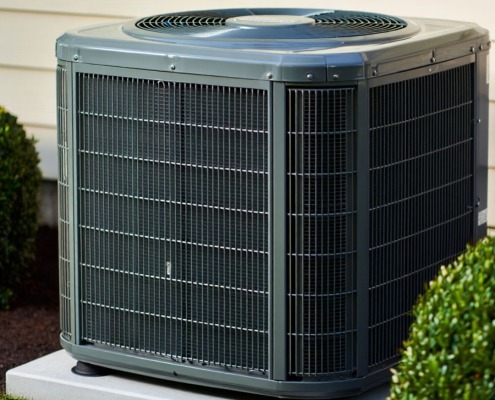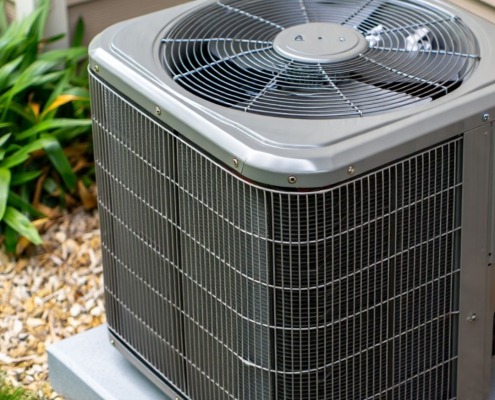How to Prevent Mold and Mildew in Your Central AC System
Steven E / Tuesday June 24, 2025
Nothing ruins a nice, cool blast of air from your AC like a musty, moldy smell. If you’ve ever flipped on your central air and caught a whiff of mildew, or worse, then you already know the importance of keeping your system clean and dry.
Mold and mildew don’t just smell bad. They can cause allergic reactions, worsen asthma, and reduce the efficiency of your HVAC system. Luckily, you don’t need to be an HVAC pro to take preventative action. With a little know-how and a few regular maintenance habits, you can keep your system clean, healthy, and running strong all summer long.
Let’s dive into what causes mold and mildew in central AC systems and exactly what you can do to stop them in their tracks.
Why Mold and Mildew Grow in Central AC Systems
Your central air conditioner works by pulling warm air from inside your home, cooling it over cold evaporator coils, and sending it back through your ducts. In the process, it also removes moisture from the air. That moisture drips off the coils and into the condensate pan, then drains out of your house.
Sounds simple, right?
Well, it is, until something goes wrong.
Mold and mildew love:
- Moisture
- Darkness
- Warm temperatures
- Dust (aka food)
An AC system has all four if it isn’t properly maintained. Dirty filters, clogged drain lines, and excess humidity are perfect conditions for microbial growth inside your ductwork, coils, or drain pan.
Signs You Might Have Mold in Your AC System
Before we jump into prevention, it helps to know the signs of mold or mildew already taking hold:
- Musty odors when your AC kicks on
- Visible mold around vents, ducts, or the air handler
- Increased allergy symptoms indoors (sneezing, coughing, itchy eyes)
- AC not draining properly or leaking water
- Dark streaks on the inside of the air handler or blower components
If you notice these, it might be time to take action, not just to clean it up, but to prevent it from coming back.
Steps to Prevent Mold and Mildew in Your Central AC System
1. Change Your Air Filter Regularly
This is the simplest, and most ignored, task in AC maintenance. A dirty filter lets dust and organic particles pass into your system. That dust ends up coating coils and ductwork, providing a food source for mold.
Pro Tip: Replace or clean your air filter every 30 to 60 days during peak use. Mark it on your calendar or set a reminder on your phone. Use a high-quality pleated filter for better capture of fine particles.
2. Clean the Evaporator Coil
Your indoor coil is where condensation collects. If dust builds up here, mold will have everything it needs to grow.
Pro Tip:
- Turn off the AC and open the access panel to reach the coils.
- Use a soft brush or no-rinse coil cleaner to gently remove dirt and debris.
- If your coils are hard to reach, a foaming coil cleaner sprayed from a distance works well too.
Do this once a year, preferably before the cooling season starts.
3. Keep the Condensate Drain Line Clear
When the drain line clogs, water backs up in the pan and creates a perfect breeding ground for mold and bacteria.
Pro Tip:
- Locate your drain line (usually a white PVC pipe near the air handler).
- Once a month, flush it with a cup of white vinegar or hydrogen peroxide.
- You can also use a wet/dry shop vac on the outside drain line to suck out blockages.
If water is pooling under your unit or leaking, check the line ASAP.
4. Inspect and Clean the Drain Pan
The pan under your coils catches condensation. If it’s full of standing water, or worse, slimy gunk, it needs attention.
Pro Tip:
- With the AC off, remove the access panel.
- Use paper towels or a wet vac to remove standing water.
- Clean with warm soapy water or a diluted bleach solution (1 part bleach to 3 parts water).
Add a few AC pan tablets (available at hardware stores) to keep it cleaner longer.
5. Seal and Insulate Ductwork
Leaky or uninsulated ducts can allow warm, humid air to infiltrate the system, especially in attics or crawl spaces. When that moisture hits cold ductwork, it condenses, feeding mold growth.
Pro Tip:
- Inspect ducts for holes, loose connections, or missing insulation.
- Seal joints with foil tape (never regular duct tape, it degrades over time).
- Wrap exposed ducts with proper HVAC insulation to prevent temperature differentials.
6. Control Indoor Humidity
Mold thrives in environments with humidity over 60%. Even if your AC is working well, high humidity in your home can overwhelm it.
Pro Tip:
- Use a hygrometer to measure humidity in your home (cheap ones are available online).
- Keep indoor humidity between 30–50%.
- Run exhaust fans when showering or cooking.
- Consider a whole-home dehumidifier or portable unit if your area is naturally humid.
7. Run the Fan on “Auto,” Not “On”
If your thermostat’s fan setting is always set to “On”, the blower keeps running even when the compressor isn’t cooling. That means it might blow warm, moist air over the wet coil, never giving it a chance to dry.
Pro Tip: Set your fan to Auto so it runs only during cooling cycles, helping the system dry out between uses.
8. Have Annual Professional Maintenance
While DIY steps go a long way, having an HVAC pro inspect your system once a year ensures deeper problems (like refrigerant leaks or improper airflow) don’t go unnoticed.
They’ll clean internal parts, check for mold buildup, and test system performance. It’s worth the cost to avoid bigger headaches later on.
Optional Upgrades for Mold Prevention
If mold is a persistent issue, or if you just want extra protection, consider these add-ons:
- UV Light Systems: Installed inside your air handler to kill mold, bacteria, and viruses on coils and in the air.
- Electrostatic Filters or HEPA filters: More effective at trapping airborne particles.
- Smart Thermostats with Humidity Control: Automatically maintain a healthy humidity range.
These upgrades typically cost more upfront but can save you long-term hassle.
Final Thoughts
Preventing mold and mildew in your central AC system isn’t complicated, it just takes a little routine care and awareness. By regularly changing filters, clearing the drain line, managing humidity, and keeping things clean, you can eliminate the conditions mold needs to thrive.
And the best part? You’ll enjoy cleaner air, fewer allergies, and a longer-lasting HVAC system, all from the comfort of your mold-free home.
Remember: your AC is one of the hardest-working systems in your house. A little DIY maintenance now will keep it running fresh and efficient for years to come.
Where To Find Us
If you need any replacement parts for your appliances, you can enter your model number at AppliancePartsPros.com to locate and order them quickly. Most orders arrive in just two business days, and we have tons of great information in our repair help section and YouTube videos to help you troubleshoot.
Stay connected with the latest DIY tips, tutorial videos, and repair guides by following us on Facebook, Instagram, and Twitter. We love hearing about your repair stories and successes. If you need more help or want personalized guidance, feel free to reach out. We’re ready to help you take on your next project with confidence!
The information in this article may not apply to your specific appliance model. We recommend consulting your manufacturer’s documentation or contact us with any questions.
With nearly a decade of experience in providing top-notch customer service regarding appliance parts and repair, Steven enjoys sharing practical advice, troubleshooting tips, and interesting information to help readers stay informed.





